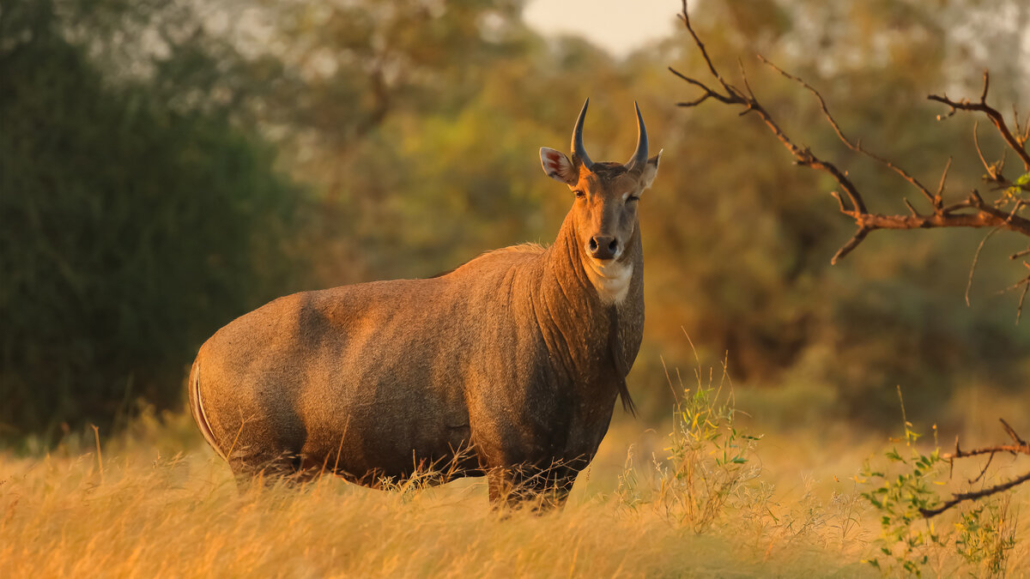The Nilgai antelope, often referred to as the “blue bull,” is an iconic species found on expansive private ranches and public scrublands across South Texas. Native to the Indian subcontinent—specifically India and Pakistan—these robust antelopes came to Texas in the 1920s via human introduction and have since flourished in the semi-arid regions, creating a unique hunting economy that attracts enthusiasts from far and wide. Scientifically known as Boselaphus tragocamelus, the Nilgai is not only the largest Asian antelope species, but also one of the most striking game animals in the world. Donning predominantly bluish-gray coats and white markings, these herbivores offer hunters a lean, rich meat, but also an exotic hunting experience unlike any other—particularly here in the United States. But what makes Nilgai hunting in Texas so beneficial to its communities?
In our latest development, Blood Origins Connecting the Dots Series: South Texas, Robbie Kroger travels to Kingsville, Texas, where he learns about the hunting culture surrounding the Nilgai antelope and the economic benefits enjoyed by countless industry professionals throughout the region.
Nilgai Hunting: Ecological Impact
In a one-on-one conversation with Josh Hartwick, a local wildlife biologist and ranch manager, Robbie explores the history of Nilgai antelope in the Lone Star State, as well as their widespread economic impact that continues to grow year after year. Nilgai have cemented themselves as a mainstay in the South Texas ecosystem with a growing estimated population over 50,000, which is particularly enticing when considering the restrictions prohibiting hunters from harvesting them on their native soil. According to Hartwick, the species was originally brought over as a potential beef supplement.
“The Nilgai antelope have incredibly high-quality meat,” Hartwick said. “It’s very lean; however, it’s very savory in flavor and it does not have a wild-game taste. They were going to attempt to domesticate these animals and use them as a beef replacement. In the ’20s, they brought these species in, turned them out wild on the ranch—they didn’t have the concept of wildlife management back then—so they had no idea the animals were going to breed and proliferate and end up how we have them now.”
Despite early concerns about their impact on local ecosystems, there is little to no data supporting the notion that Nilgai have disrupted native species. For food, they primarily forage through a variety of vegetation, including shrubs, grasses and cultivated crops, while simultaneously coexisting within the ecological framework without creating any sort of noticeable imbalance. However, effective wildlife management practices have helped ensure their numbers remain in check, preventing overpopulation and subsequent ecological challenges.
Nilgai Hunting: A Thriving Economy
The allure of Nilgai hunting in Texas has led to significant economic growth across the southern region, as hunting outfitters, ranches and guides have tailored specialized packages to offer zealous outdoorsmen the trip of a lifetime. Because of the scarcity of Nilgai hunting opportunities around the world, these businesses have a global reach throughout the legal hunting season, which typically spans from late fall to early spring (though Nilgai can legally be taken year-round as an exotic species). But the economic benefits don’t end at the gates of some private ranch. Hunting expeditions encompass a vast range of services, including transportation, lodging, hospitality, retail, food and more. Moreover, the sale of hunting licenses and permits, as well as associated fees and taxes, contributes to statewide conservation efforts and habitat preservation.
Nilgai Hunting: The Fun Part
It isn’t hard to understand how Nilgai have become a cornerstone of the Texas hunting industry, as the exotic species offers hunters a challenging and exciting experience, as well as a ton of meat and a massive, beautiful trophy. Few parts of the world offer a hunting adventure highlighted by a 600-pound quarry, let alone one with such keen senses and the ability to adapt to such a wide variety of terrains.
